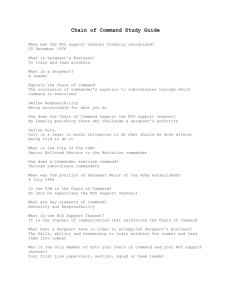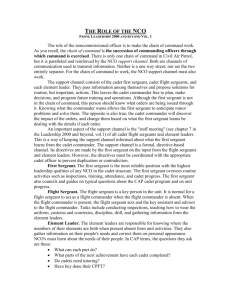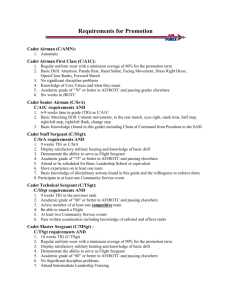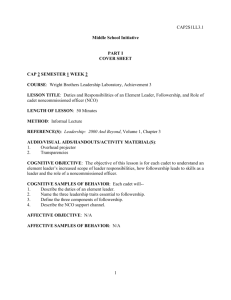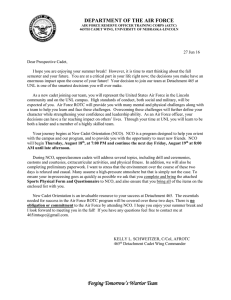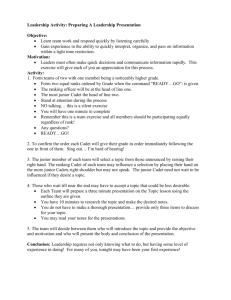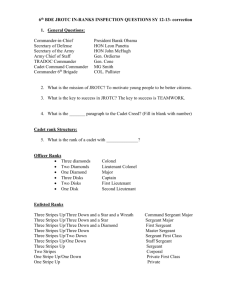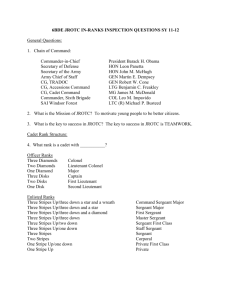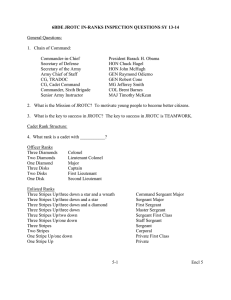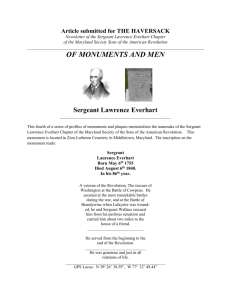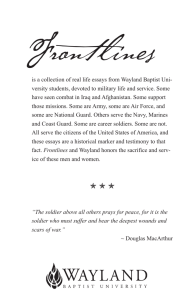Chapter 3 Review
advertisement
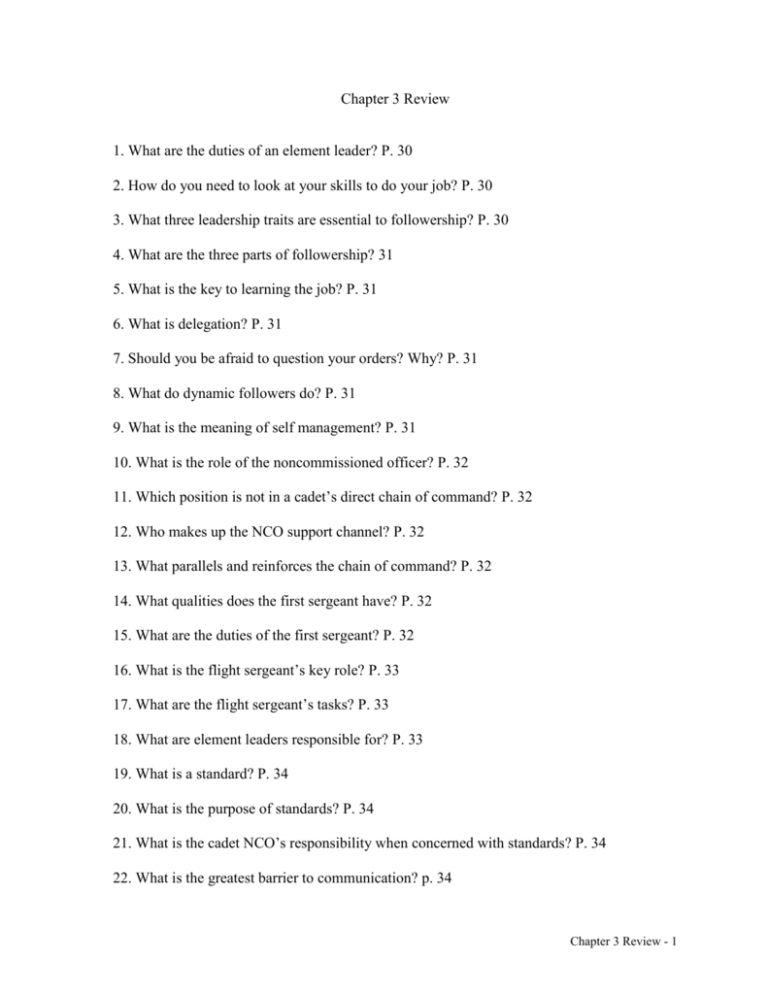
Chapter 3 Review 1. What are the duties of an element leader? P. 30 2. How do you need to look at your skills to do your job? P. 30 3. What three leadership traits are essential to followership? P. 30 4. What are the three parts of followership? 31 5. What is the key to learning the job? P. 31 6. What is delegation? P. 31 7. Should you be afraid to question your orders? Why? P. 31 8. What do dynamic followers do? P. 31 9. What is the meaning of self management? P. 31 10. What is the role of the noncommissioned officer? P. 32 11. Which position is not in a cadet’s direct chain of command? P. 32 12. Who makes up the NCO support channel? P. 32 13. What parallels and reinforces the chain of command? P. 32 14. What qualities does the first sergeant have? P. 32 15. What are the duties of the first sergeant? P. 32 16. What is the flight sergeant’s key role? P. 33 17. What are the flight sergeant’s tasks? P. 33 18. What are element leaders responsible for? P. 33 19. What is a standard? P. 34 20. What is the purpose of standards? P. 34 21. What is the cadet NCO’s responsibility when concerned with standards? P. 34 22. What is the greatest barrier to communication? p. 34 Chapter 3 Review - 1 23. How can you overcome some barriers to communication? p. 34 24. In the barrier, confusion between the symbol and the thing being symbolized, what are words? P. 34 25. Why is it easy to misuse abstract words? P. 35 26. Why should we avoid using “two-value terms?” p. 36 27. What is the first step in the demonstration-performance method of teaching drill? P. 36 28. Why is the demonstration-performance method a useful way to drill? P. 36 29. Which command do you use if the flight is in a column formation and you want it to form a single file and march forward? AFMAN 36-2203, para. 4.13 30. In drill, what does a cadet do upon the command “FRONT AND CENTER?” AFMAN 36-2203, para. 4.7 Chapter 3 Review - 2

